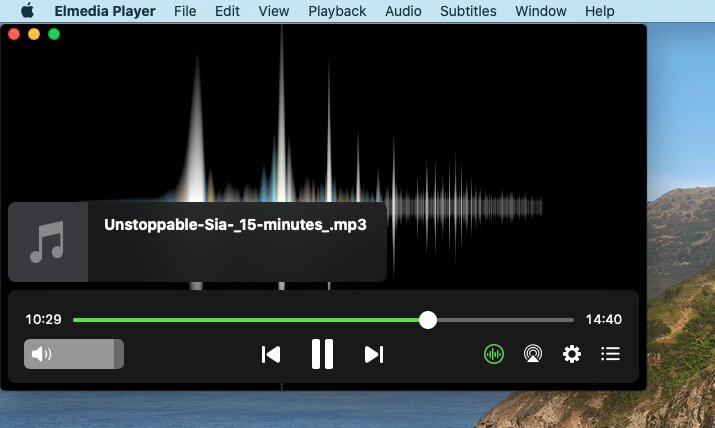

#TOP RATED MUSIC PLAYER FOR MAC SOFTWARE#
The best way to rip CD-audio is using of a system (CD-ripper software + optical disk drive), that cause lesser reading error number. What is the best way to rip CDs? What is the best way to digitize my CD collection? Test resume makes by comparison of the integral marks of the systems. Integral mark of the tested system is averaged by different test CDs. Found identical binary sequences in original and ripped WAV files and shift compared binary content to match the sequences.Īs begin of track considered begin of original WAV's audio data. To superpose refer to identical binary sequences of audio data. If the offset is present, superpose original and ripped WAV files. It needs to be addressed possible byte offset between original WAVs and ripped ones.

Recommended provide several times (10 and more) rippings in combination Register it in results asmark of ability CD extractor to fault avoiding.ĭuring WAV file binary comparison need consider audio data only (pass by WAV’s header and non-audio chunks). Register it in results as mark of steadiness CD extractor to fault appearing.ī) Percent of detected (via binary comparison) wrong bytes to total number of bytes in track. Compare ripped WAV files with original files (sources of tracks of the test CDs) via binary comparison tool (goal 1.4):Ī) Length in bytes from beginning of the track to first detected (via binary comparison) fault byte. When compact disc ripper read music information and get fault (as from optical disc drive, as by the data analysis), it can reduce reading speed to safer extracting. However, there is no additional element of uncertainty like a database without original record checksum.ĬD extractor can begin to read information at maximal speed to save time.

This method also doesn't guarantee 100% probability of audio stream integrity. But repeatable audio data reading from CD can cause different content in problematical places.įurther, the obtained data array is analyzed to additional ED. Re-reading from music data buffer have no sense, because there is same information for each re-reading. Re-reading performed several times.īuffering elimination is an attempt of forced cleaning of CD data buffer for each re-reading. Re-reading is repeated reading of CD track's fragment. But, I suppose, it is a matter of older drives. Probably, some drives can't calculate it. One error flag control audio data integrity of 1 byte of the raw audio information. The safe/secure compact disc ripper software may to apply additional fault detection and correction algorithm under data, that was before checked and corrected into CD drive. In case of unsuccessful fault elimination, error flag (C2) mark a broken byte. If it is detected, the drive tries to restore music information. So compact disc drive try to detect fault inside. Ripper software's statistics collecting by multiple re-readings of your optical disc.ĬD-drive can correct faults and restore (with some probability) valid audio information (Reed–Solomon coding). If a CD ripper (that is used to copying of the majority) has a non-fixed bug, the same situation may happen too.Īlso, rare record or different optical disc version (pressing, mastering?) issues may be there. We can hope (without 100% warranty), that the majority (of similar checksums for some CD into the database) is the same checksum of the CD's original record.īut, in instance, if a serie of CD was manufactured without 100% identity to original studio files (for unknown to us reasons), then we have non-correct majority. So ripped checksum compared with an array of uncertified checksums. But the database doesn't contain original record checksum.


 0 kommentar(er)
0 kommentar(er)
